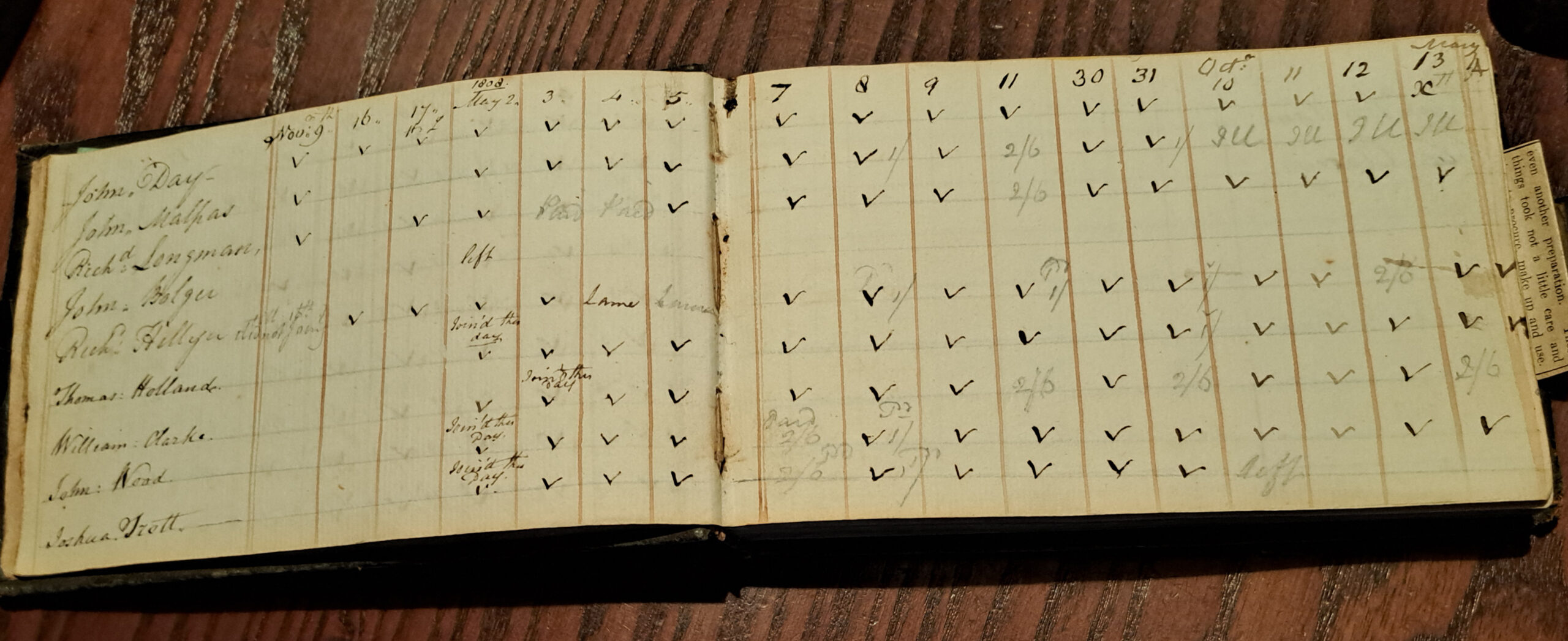Recently acquired, the leather bound muster book (16cm x 10cm) was compiled by Thomas Worley, a solicitor, who was the quartermaster of the troop. It records the names of all those who joined between November 1807 and May 1815, their attendance at drills and annual inspections, and the fines administered for absence. There were 56 members in 1807, the number holding steady until dipping to 46 in 1815. Fines were 2s.6d for the rank and file, and 5s.0d for officers. Under the Volunteer Exemption Act of December 1803, yeomen were required to attend at 24 days’ training annually to qualify for exemption from the militia ballot, this being reduced to 12 days by the subsequent Volunteer Consolidation Act in June 1804. It is clear from the muster book that attendance was always high at Stony Stratford, drills being concentrated in March or April, May or June, October, and November so as least to interfere with the agricultural year. With Napoleon forced to abdicate in April 1814, drills ceased in March, only for the corps to be hastily reconvened on 23 May 1815 following the emperor’s return from exile on Elba. That was the last drill entry in the book, Napoleon being finally defeated at Waterloo on 18 June 1815
The troop officers were Captain Richard Harrison of Wolverton House; Lieutenant John York, a lace manufacturer and draper; and Cornet William Oliver, a partner in the banking firm of Messrs. Oliver, Langhorne and Harrison. The bank failed in 1821 but was later re-founded by John Oliver and John York. Yeomen had to supply their own horses and, consequently, the yeomanry tended to rely upon the farming community and what might be termed ‘horse trades’ but did also attract professional men and leading tradesmen in urban communities. A brief note indicates that the unit had £84 in its funds in 1809.
The muster book, however, is only one half of the volume for the entries at the other end consist of ‘recipes’ for cures and treatments of humans and animals compiled between 1838 and 1848. They range from rheumatism and gout to cracked heels, distemper in dogs, gruel for a horse, and, more in keeping with the book’s original military use, browning gun barrels. Sore feet, for example, could be eased with oil of vitriol and tincture of myrrh. The book was the subject of an article in the North Bucks Times on 29 February 1944, in which it was said that it had been discovered in an old bureau.
Formed in May 1794, the Bucks Yeomanry mustered sixteen troops by 1799, with that at Stony Stratford initially enrolled in 1798. When the yeomanry was formed into three regiments in 1803, the troop formed part of the 3rd (Northern) Regiment of Bucks Yeomanry Cavalry. That regiment was disbanded in 1827 but Stony Stratford continued to supply a troop to what was now constituted as the 2nd Regiment throughout the nineteenth century. Subsequently, one of the four squadrons of the Royal Bucks Hussars was located in Stony Stratford in 1902.
